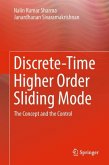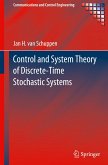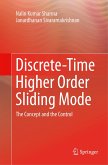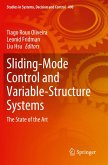This book extrapolates many of the concepts that are well defined for discrete-time deterministic sliding-mode control for use with discrete-time stochastic systems. It details sliding-function designs for various categories of linear time-invariant systems and its application for control. The resulting sliding-mode control addresses robustness issues and the functional-observer approach reduces the observer order substantially.
Sliding-mode control (SMC) is designed for discrete-time stochastic systems, extended so that states lie within a specified band, and able to deal with incomplete information. Functional-observer-based SMC is designed for various clauses of stochastic systems: discrete-time; discrete-time with delay; state time-delayed; and those with parametric uncertainty. Stability considerations arising because of parametric uncertainty are taken into account and, where necessary, the effects of unmatched uncertainties mitigated. A simulation example is used to explain the use of the functional-observer approach to SMC design.
Discrete-Time Stochastic Sliding-Mode Control Using Functional Observation will interest all researchers working in sliding-mode control and will be of particular assistance to graduate students in understanding the changes in design philosophy that arise when changing from continuous- to discrete-time systems. It helps to pave the way for further progress in applications of discrete-time SMC.
Sliding-mode control (SMC) is designed for discrete-time stochastic systems, extended so that states lie within a specified band, and able to deal with incomplete information. Functional-observer-based SMC is designed for various clauses of stochastic systems: discrete-time; discrete-time with delay; state time-delayed; and those with parametric uncertainty. Stability considerations arising because of parametric uncertainty are taken into account and, where necessary, the effects of unmatched uncertainties mitigated. A simulation example is used to explain the use of the functional-observer approach to SMC design.
Discrete-Time Stochastic Sliding-Mode Control Using Functional Observation will interest all researchers working in sliding-mode control and will be of particular assistance to graduate students in understanding the changes in design philosophy that arise when changing from continuous- to discrete-time systems. It helps to pave the way for further progress in applications of discrete-time SMC.








